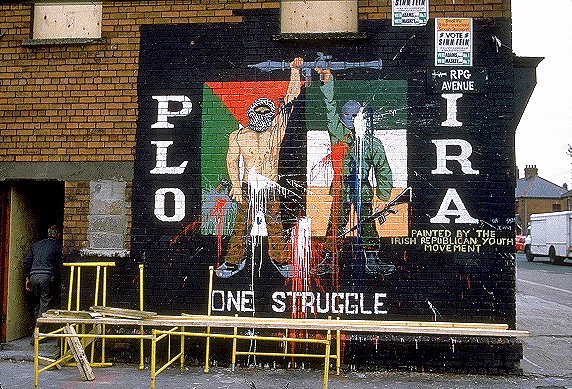Comparing IRA and Hamas: Unraveling Parallel Histories and Complex Conflicts
Understanding the Enigma of Two Conflict Zones
The enduring conflicts involving the Irish Republican Army (IRA) in Northern Ireland and Hamas in the Middle East are a tapestry of history, struggle, and survival. This article embarks on a comprehensive journey, shedding light on the remarkable parallels and distinctions between these enduring conflicts and the roles these enigmatic organizations play. The ultimate aim is to unearth profound insights into the possibilities for peace and reconciliation.
Seeds of Discord
The Northern Ireland conflict, often called “The Troubles,” traces its roots to intricate religious, political, and historical divisions. In this rugged landscape, Catholic nationalists and Protestant unionists found themselves deeply divided. Across the seas, the Israeli-Palestinian conflict sprouted from the 1948 Israeli Declaration of Independence, resulting in the displacement of Palestinian communities. Within this maelstrom, Hamas, a branch of the Muslim Brotherhood, emerged as a resistance movement.
Militancy to Politics
While both the IRA and Hamas walk the tightrope of political activism and armed resistance, their objectives diverge distinctly. The IRA’s dream lay in the reunification of Ireland, while Hamas passionately advocates for Palestinian self-determination and an end to Israeli occupation.
Two Complex Narratives
Both conflicts share the core elements of deep-seated divisions, historical grievances, and fervent desires for self-determination. However, the Northern Ireland conflict is marked by the juxtaposition of sectarian divisions within a single territory, while the Israeli-Palestinian conflict is defined by fierce competition in their claims to the same piece of land.
Navigating the Path to Resolution
Moments like the Good Friday Agreement in Northern Ireland and countless peace negotiations in the Middle East have provided fleeting solace. Yet, the path to lasting peace remains shrouded in the mist of territorial disputes, the status of refugees, and conflicting visions of a final settlement.
Varied Interpretations
Comparing these conflicts often sparks passionate debates. Some argue for shared elements between the struggles, while others fervently underline the unique historical and geopolitical complexities. Diverse perspectives enrich our understanding.
Global Influences
External actors have cast long shadows on the stage of these conflicts. The United Kingdom’s role in Northern Ireland and the United States’ influential presence in the Middle East have significantly shaped the narratives through their participation in negotiations and peace agreements.
Costs of Conflict
The humanitarian and socioeconomic toll of these conflicts is profound. Displaced populations, lives lost, and economic instability define the human cost of these struggles.
Continuing the Quest for Reconciliation
The path to lasting peace necessitates unwavering dedication to diplomacy, dialogue, and reconciliation. The challenges are formidable, but the call for engagement is unwavering.
In Closing
In the profound exploration of Northern Ireland and the Middle East, and the roles played by the IRA and Hamas, it’s clear that the road to peace is marked by complexities, shared experiences, and unique narratives. The pursuit of peace hinges on our commitment to understanding and the relentless pursuit of justice.
